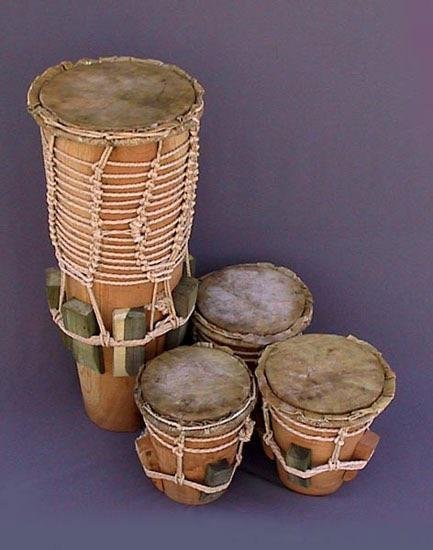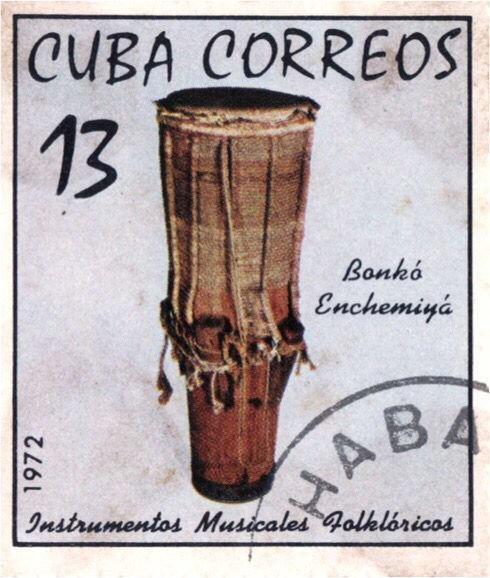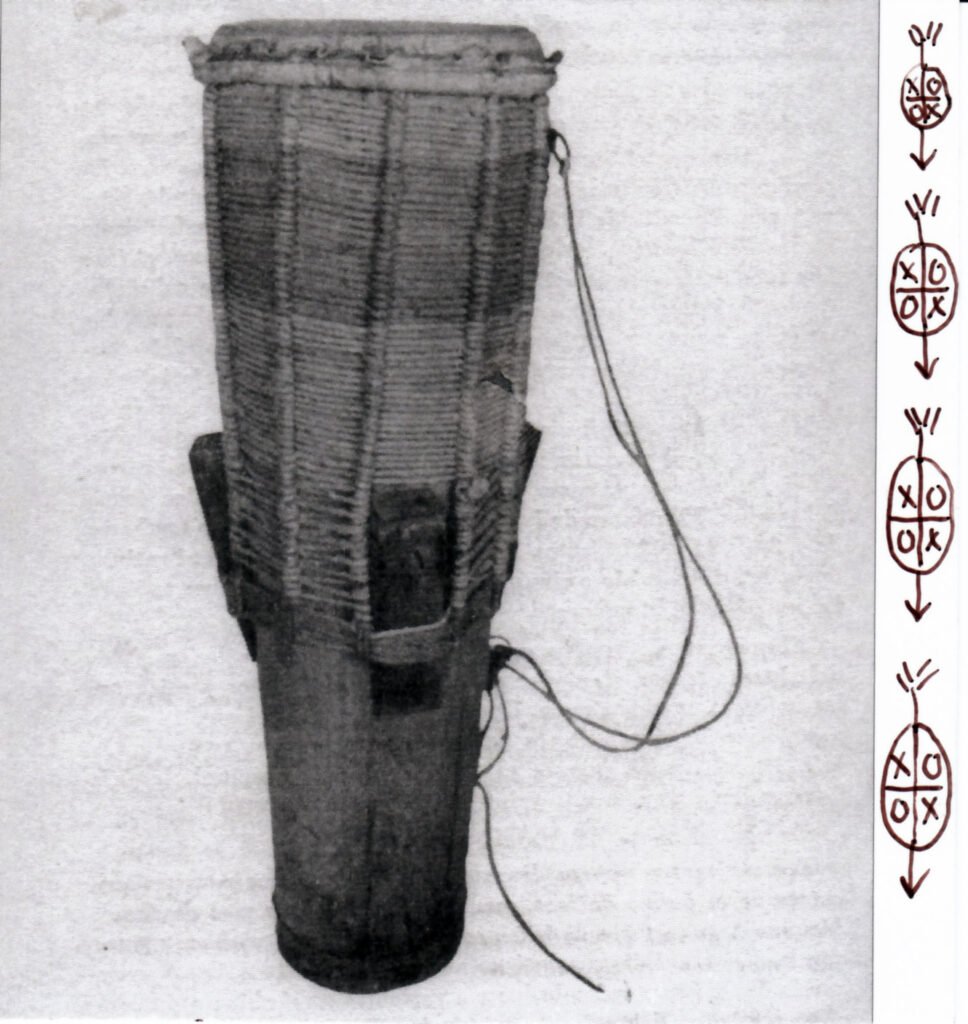Deep Origins: From Africa to Cuba
The Bonkó Enchemiyá originates from the spiritual and cultural traditions of the Cross River region of southeastern Nigeria and southwestern Cameroon. This area is home to the Efik, Efut, and Ibibio peoples, whose Ekpe (Leopard) societies played an essential role in governance, spirituality, and community cohesion. These societies used sacred drumming, masks, and initiatory rites to transmit moral teachings and ancestral knowledge.
In the early 1800s, enslaved people from this region were forcibly brought to Cuba, primarily to Havana and Matanzas. Despite the trauma of enslavement and displacement, they preserved the spiritual frameworks of their ancestors by forming the Abakuá society—a mutual-aid and religious fraternity rooted in the structure of Ekpe, adapted to the colonial Cuban context.
The Bonkó Enchemiyá became the central instrument of this transplanted tradition—a drum that carried not only sound but cultural memory, sacred communication, and collective resistance.
The Drum Ensemble (Biankomeko)
The Bonkó Enchemiyá is the largest and most sacred of four drums in the biankomeko ensemble used in Abakuá ceremonies. This set includes:
- Bonkó Enchemiyá – the lead drum, responsible for improvising and “speaking” through complex rhythms.
- Enkomó drums (played with the hands and held under the arm):
- Obiapá – low pitch
- Kuchi Yeremá – middle pitch
- Binkomé – high pitch
These drums are hand-carved from wood, traditionally from sacred trees, and their heads are made from goat skin, tightened with ropes and wooden wedges. The drums are often marked with anaforuana, mystical symbols used within Abakuá cosmology.
Significance: A Sacred Language of the Drum
The rhythms played on the Bonkó Enchemiyá are not merely musical—they are a codified language, intelligible only to initiated Abakuá members. The drum “speaks” in phrases that convey:
- Mythic stories and ancestral teachings
- Moral codes and spiritual messages
- Cues for ritual dance and invocation
To outsiders, the patterns may seem abstract, but to insiders, they carry profound meaning, reinforcing social bonds, spiritual continuity, and a sense of shared identity that has endured for over two centuries.
Ritual and Spiritual Use
The Bonkó Enchemiyá is used exclusively in Abakuá rituals, including:
- Initiation ceremonies
- Funeral rites
- Public processions like Día de los Reyes (Three Kings Day)
- Masked dance rituals, particularly those featuring the íreme, a masked and costumed figure representing spiritual forces
The drum is considered alive in a spiritual sense. Before it is ever played, it must be ritually consecrated, “fed” with offerings, and imbued with sacred energy by elders. Drums that were used in historical ceremonies are treated with reverence; some are now housed in museums as sacred artifacts, not mere instruments.
During colonial rule, Spanish authorities often confiscated Abakuá drums and regalia, fearing the power and secrecy of the society. Despite repression, the Abakuá remained resilient, preserving its traditions through oral memory, symbolic language, and ritual performance.
Impact on Cuban Music and Culture
While the Abakuá society remains closed to non-initiates and maintains a high level of secrecy, its musical influence has radiated outward, shaping major genres of Cuban music:
- Rumba – especially the quinto drum style, which mirrors Bonkó’s improvisatory language
- Afro-Cuban jazz – artists like Chano Pozo, Tata Güines, and Luciano “Chano” Díaz incorporated Abakuá-inspired rhythms into jazz contexts
- Folkloric performance – state-supported ensembles in Cuba have adapted elements of Abakuá music and dance for stage, often with input from elder practitioners
The Bonkó Enchemiyá, through its sound and spirit, has helped preserve African identity in Cuba, even as it has adapted to a changing world. It stands as a symbol of resistance, resilience, and rootedness in African heritage.
Respectful Engagement and Cultural Sensitivity
It is essential to approach Abakuá culture—and the Bonkó Enchemiyá in particular—with respect, humility, and understanding. These are not just musical expressions but living spiritual systems, maintained under conditions of historical violence and survival.
Outsiders are generally not permitted to participate in core Abakuá rituals, and the drums are sacred, not to be played or handled without initiation and training. However, the public manifestations of Abakuá music offer a glimpse into a world of deep ancestral intelligence and spiritual continuity.
Summary Table
| Aspect | Details |
|---|---|
| Origins | Derived from West African Ekpe societies (Efik, Ibibio) via enslavement |
| Drum Ensemble | Biankomeko: Bonkó (lead) + Enkomó drums (Obiapá, Kuchi Yeremá, Binkomé) |
| Function | Sacred instrument; plays a coded language understood by initiates |
| Ceremonial Role | Used in initiations, funerals, masked dances, and spiritual rituals |
| Colonial Suppression | Drums and rituals were outlawed or seized; now preserved in some museums |
| Influence | Inspired rumba, Afro-Cuban jazz, and folkloric music |
| Spiritual Significance | Treated as sacred beings; drums are consecrated and ritually maintained |


